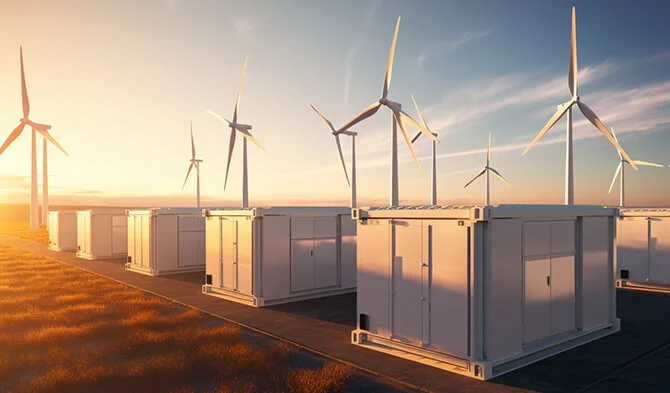The hardware topology structure of Battery Management System (BMS) is divided into two types: centralized and distributed :
1. The centralized type brings all electrical components together on a large board, and the sampling chip channels can use the daisy-chain communication with the main chip. The circuit design is relatively simple, and the product cost is greatly reduced. However, all acquisition harnesses are connected to the main board, which poses a greater challenge to the safety of BMS, and there may be problems with the stability of the daisy-chain communication. This design is more suitable for battery packs with small capacity or fixed battery pack types.
2. The distributed type includes a main board and a subordinate board, and each battery module may be equipped with a subordinate board. The disadvantage of this battery condition management system design is that if the number of battery cells in the module is less than 12, there will be wasted sampling channels (usually the sampling chip has 12 channels), or 2-3 subordinate boards will collect all battery modules. In this structure, there are multiple sampling chips in one subordinate board, which has the advantages of high channel utilization, cost-saving, flexible system configuration, and adaptability to different capacities, specifications, and types of modules and battery packs.

The hardware design and specific selection should be combined with the functional requirements of battery system. The general functions mainly include acquisition functions (such as voltage, current, and temperature acquisition), charging port detection (CC and CC2) and charging wakeup (CP and A+), relay control and status diagnosis, insulation detection, high-voltage interlock, collision detection, CAN communication, and data storage. These functions are carefully synchronized to ensure optimal battery management and prevent battery overheating and other failure modes. Overall, the battery management system bms working principle is crucial in ensuring maximum battery efficiency, longevity, and overall safety, providing an essential foundation to support the operations of modern energy storage storage system.

1. Main Controller
Process the information reported by the subordinate controller and the high-voltage controller, and judge and control the operating status of the power battery based on the reported information, realize BMS-related control strategies, and make corresponding fault diagnosis and processing.
2. High-Voltage Controller
Real-time acquisition and reporting of the total voltage and current information of the power battery, and the hardware circuit realizes timing scoring, providing accurate data for the main board to calculate the State of Charge (SOC) and State of Health (SOH), and can also realize pre-charge detection and insulation detection functions.
3. Subordinate Controller
Real-time acquisition and reporting of the single-cell voltage and temperature information of the power battery, feedback on the SOH and SOC of each string of battery cells, and passive equalization function, effectively ensuring the consistency of the battery cells during power use.
4. Sampling Control Harness
Providing hardware support for various information acquisition and controller information exchange of the power battery, adding redundant insurance functions on each voltage sampling line, effectively avoiding external short circuits caused by harness or battery management system (BMS) of the battery.